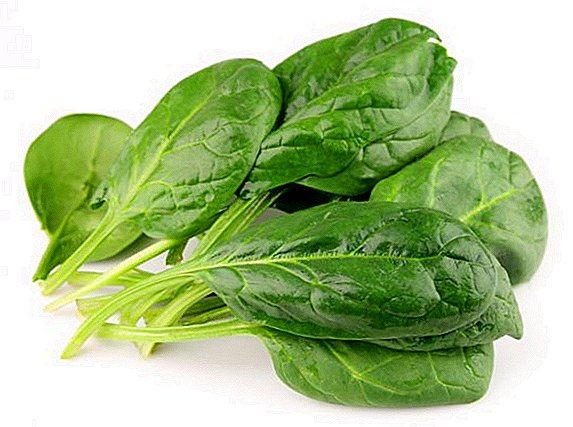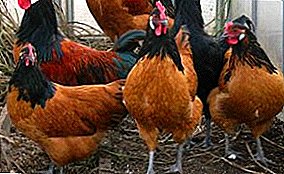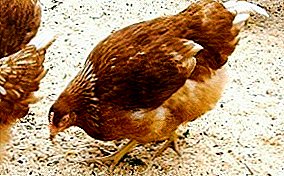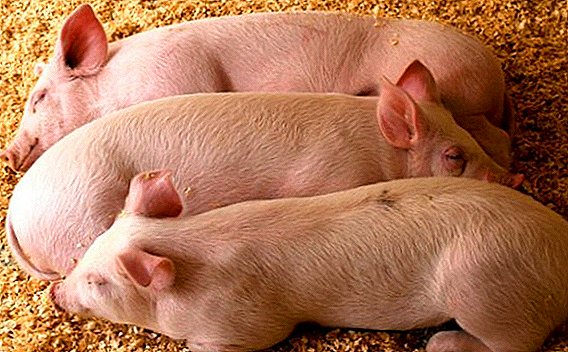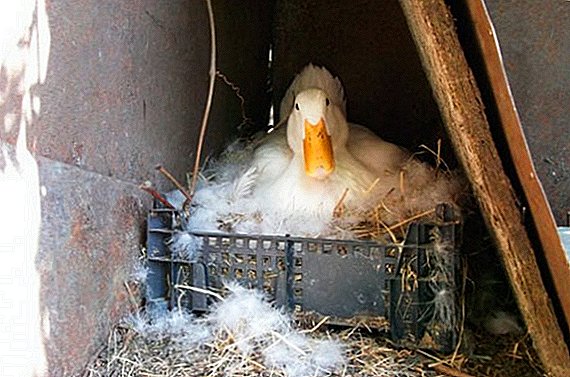 Breeding ducks can be a profitable occupation: their meat is tasty and not fat, they are excellent hens with a developed incubation instinct. The main thing is that the birds have a comfortable nest, and how to make and equip it, let's look at this article.
Breeding ducks can be a profitable occupation: their meat is tasty and not fat, they are excellent hens with a developed incubation instinct. The main thing is that the birds have a comfortable nest, and how to make and equip it, let's look at this article.
General nest requirements
The key to successful incubation will be compliance with several important for the convenience of the laying hen, the location and arrangement of the nest:
- location should be out of sight, with dim lighting, quiet (far from the feeders);
- low threshold around the edge to keep possible rolling out of eggs;
Did you know? The Marie people have a duck cult. The bird is considered the parent of the world: it was she who, according to popular belief, became the wife of the god of thunder, Ukko, laid an egg-Earth.

How to make a nest for ducks do it yourself
The design of our nest will resemble a rectangular box shape, it is designed for three hens.
Learn how to make a nest for chickens with an egg digger.
Necessary materials
For the manufacture will need:
- plywood;
- wooden slats - 4 pcs. 120 cm long, 4 pcs. 55cm each, 4 pcs. 40 cm;
- self-tapping screws;
- jigsaw;
- screwdriver;
- furniture hinges;
- roulette and pencil.

Dimensions
Dimensions will be standard, except for the width, calculated on three places:
- height - 40 cm;
- width - 120 cm;
- depth - 55 cm.
We advise you to read about how to make a pond on a plot for geese and ducks, as well as how to build a barn for ducks with your own hands.
Manufacturing
The manufacturing scheme is as follows:
- We make four blanks from a sheet of plywood: top, bottom, back and front wall with dimensions of 40x120x55 cm.
- Next, prepare two blanks on the sides of the structure and two on the internal partitions with dimensions of 40x40x55 cm.
- From wooden slats collect frame, fastened with screws.
- In the preparation of the front wall, we draw a circle for the entrance with a pencil; we make all three circles equally spaced from each other.
- Cut the entrance.
- We collect all the blanks, fixing it on the base with screws, leaving the top one.
- Inside we divide the space into three equal nests and separate them with partitions.
- For the convenience of replacing the litter and cleaning the nesting in the future, the top cover can be made mobile by strengthening it on the furniture hinges.
Arrangement
Hay is not recommended as a litter: it, even well dried, quickly gathers moisture in the shade. Peat will be the best litter option: it is moisture resistant, and it also has the ability to absorb odor. In the absence of such material suitable straw or sawdust.
The layer of litter in the summer should be at least 20 centimeters in height, in the winter season it is desirable to increase it to 30 cm.
We recommend reading about how much time a duck is sitting on eggs for hatching, how much a duck eats before slaughtering and how to carve a duck, why a duck floats on water, how to properly trim duck wings, what diseases are dangerous for ducks.
Where to place
Definitely the nest should not be located directly opposite the entrance: firstly, it is a draft; secondly, noise and undue attention. The birds during the incubation period need peace and quiet, they do not like excessive attention and fuss, they can leave eggs.  Therefore, the nests should also not be located close to the feeders and resting places of the rest of the inhabitants of the house. It should be a secluded corner with diffused lighting, quiet and inconspicuous.
Therefore, the nests should also not be located close to the feeders and resting places of the rest of the inhabitants of the house. It should be a secluded corner with diffused lighting, quiet and inconspicuous.
Important! Damp and damp walls can make it difficult to choose a place to hatch, so before you equip a house, warm it inside and out, eliminating any moisture.
How to teach a duck to the nest
The first rule of successful training for the nest is its device before the start of puberty of individuals. Then you can stimulate the hen by placing a model of the egg. You can put natural eggs, replacing them with fresh ones from time to time. If the duck is interested in the place, it will begin to equip it, warming its own fluff.
The optimal number of nests
If you have a large population, the number of nests is not necessary to count at all: usually one out of three becomes the hen. But, on the advice of specialists, a separate hatching place is desirable for each layer.  If it is a big house for several places, each of them should be separated by a partition. If these are separate houses in one place, then they need to be located at a small distance from each other, since birds can sizzle and pinch each other.
If it is a big house for several places, each of them should be separated by a partition. If these are separate houses in one place, then they need to be located at a small distance from each other, since birds can sizzle and pinch each other.
Important! ATDuring the hatching period, it is impossible to allow the already hatched ducklings to fit into the nest. The hen can leave its eggs and begin to raise and care for the ducklings.
Nest Inspection Procedure
Inspection of the nest and its cleaning begin two weeks after the appearance of the clutch. You can not make an inspection while the duck is in place: it should not see how you touch the clutch, otherwise it can throw it. From time to time the hen needs to eat, drink and walk - then the procedure is carried out.  On examination, they remove too dirty, irregularly shaped, cracked eggs, clean the litter, changing the old layer. It is desirable to mark all the remaining eggs: ducks sometimes throw their offspring into someone else's clutch. If there are marks, other people can be distinguished and collected.
On examination, they remove too dirty, irregularly shaped, cracked eggs, clean the litter, changing the old layer. It is desirable to mark all the remaining eggs: ducks sometimes throw their offspring into someone else's clutch. If there are marks, other people can be distinguished and collected.
Did you know? In the Chinese art of feng shui, a pair of figures of mandarin ducks will attract happiness and love in the house.In conclusion: when breeding ducks, it is important to remember that birds suffer from unsanitary conditions, moisture and noise. Noise can bring the birds to nervous stress - this should be considered not only when nesting, but also the house itself. Regularly need to replace bedding and disinfection.



